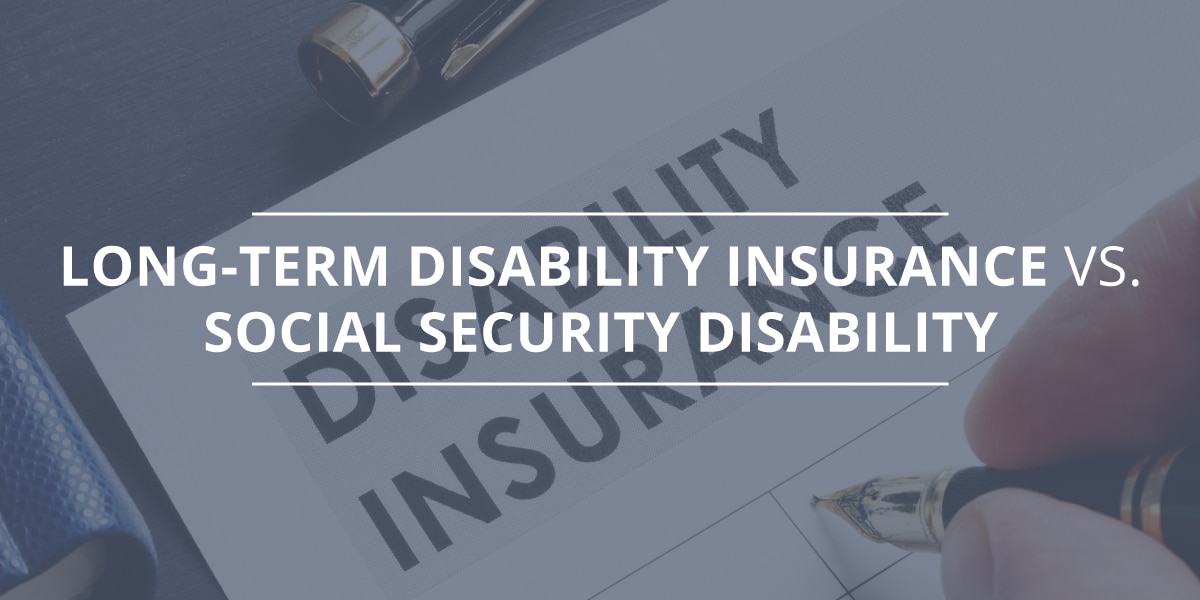
Finding yourself partially or totally disabled has devastating effects on your body and mind. Fortunately, there are resources and benefits for people who are unable to work due to an injury or medical condition. The most commonly used benefits are long-term disability insurance and Social Security disability insurance (SSDI).
Both programs have their benefits and drawbacks. One program can offset the other before you even realized what happened. It is frustrating when you can’t receive the benefits you deserve due to a technicality.
Understanding how individual programs work is critical to maximizing benefit amounts and the length of time you receive them. In most cases, disabled individuals can benefit from speaking with a social security disability lawyer licensed in New Jersey or Pennsylvania to provide keen insight.
What Is Long-Term Disability Insurance?
Long-term disability insurance is a policy usually purchased through your employer or an independent insurance agency. A long-term disability package may also include a short-term plan. Generally, a short-term plan offers protection for injuries of illnesses that last for less than six months, with coverage typically between 12 and 26 weeks. Long-term disability plans pick up where short-term plans leave off, and may offer benefits for anywhere from one year to full retirement age as long as you continue to meet the plan’s definition of disability.
Benefit Pay-Outs Are Faster than SSDI
Receiving approval for SSDI benefits is a lengthy process. It can take an average of five months to receive benefits (longer, if you have to go to a hearing). The processing for long-term disability can be simplified since it takes a shorter amount of time that is strictly determined based on statute for employer-based plans. Many people choose to draw long-term disability benefits while waiting for SSDI approval.
Long-term disability requires individuals to wait a length of time before receiving benefits. This term is known as a waiting period or “elimination period.” This period varies by policy, and can be as short as 7 or as long as 180 days. The waiting period for both New Jersey and for short-term benefits may be between seven and fourteen days, depending upon your ability to work.
Both Short and Long-Term Disability Policies May Be a Good Idea
Short-term disability plans generally are effective for no longer than 6 months. At this point, long-term disability plans can take effect, with coverage lasting from one year to full retirement age (provided that you are still disabled under the plan’s definition of disability). In this way, the two different types of plans can work together to extend the amount of time that you can receive benefits.
Long-term disability does not cover your entire salary for work missed due to your injuries. The standard rate of payment is between fifty and seventy percent of your working salary. The number really depends upon your individual plan.
Be Aware of Your Long-Term Disability Insurance Limits
Before purchasing a long-term disability policy, it’s a good idea to have the terms and conditions reviewed by a disability lawyer licensed to practice in New Jersey or Pennsylvania depending upon your residency. He or she can spot pitfalls and advantages in premiums, payouts, and coverage. For example, some policies may have “pre-existing condition” exclusions if your disability begins within the first year of your coverage. Other policies may simply limit your ability to obtain benefits for certain conditions altogether.
What Is Social Security Disability Insurance?
Social Security disability insurance is a program provided by the U.S. Social Security Administration. When you paid into the Social Security program from your earnings, you were paying into these benefits for your future use if you became disabled.
SSDI Takes Longer to Process
As previously stated, these benefits take longer to receive approval versus long-term disability insurance. Even if you win your case quickly, there is a consecutive five-month waiting period before you can draw upon your account. Meaning that you cannot receive SSDI until you have been out of work for at least those five months. Therefore, receiving benefits may take a minimum of six months to qualify due to the calendar month basis. This doesn’t account for the time it takes Social Security to decide your claim or the possibility of having to appeal an incorrect denial.
Work Requirements Must Be Met to Receive SSDI
SSDI benefit eligibility requires you to have worked enough time. The SSA calculates your benefits based upon the number of credits you earned throughout your employment history. As of 2023, you receive one credit for every $1,640 earned with a maximum of four credits for the year. Over time, your credits must meet threshold requirements.
Proving Disability Is More Complex for SSDI Benefits
SSDI approval requires your condition to meet strict criteria according to the SSA. Therefore, for most people, you must prove you are unable to perform work in any capacity. In short, you must be fully disabled. This condition can be challenging to demonstrate to an SSA claims adjudicator.
The good news is that the SSA has compiled a list of qualifying conditions. They maintain this list in a guide known as the Listing of Impairments Blue Book. You can review specific criteria regarding disabilities as it relates to your current condition. Even if you don’t have one of these conditions, you can still qualify if you can show you are unable to perform your past work, or any other full-time work that exists in the economy.
Does Social Security Disability Affect Long-Term Disability Insurance?
Some disabled individuals are eligible to receive long-term disability and SSDI benefits concurrently. Your long-term disability insurer will likely require you to apply for SSDI benefits. Once approved, your insurance company pays the difference between SSDI benefits and your current policy amounts. This also means that if you receive LTD benefits first, and later receive an award of Social Security with a retroactive “lump sum” payment, you may need to pay some or all of that money back to the insurer as an overpayment.
Working with a NJ or PA Social Security Disability Lawyer Can Provide Valuable Insight
The strategy you put into place for receiving long-term disability and SSDI benefits may be critical to your lifelong care. Therefore, it is wise to discuss your case with a disability lawyer to help you through the process while being a fierce advocate in your corner. He or she can also create a strategy to maximize your total benefits package.
Aside from high-level work, an attorney can manage the little details as well. His or her office can manage communications, executing claim requests, and organizing a paper trail during the lifetime of your benefits payout.
Contact Bross & Frankel, P.A. for a Free Claim Review
Interested in learning more about your claim? Our team of social security disability lawyers in Pennsylvania and New Jersey are ready to serve you at Bross & Frankel, P.A. Schedule a free, no-obligation claim review today. You can contact our office by calling (856) 795-8880 or by sending us a message through our request form.

Rich Frankel is the managing partner of Bross & Frankel. He is a member of the New Jersey and Pennsylvania bars. He has focused exclusively on disability and social security benefits since 2005.
Mr. Frankel joined what is now Bross & Frankel after having watched his father struggle with disability, fighting a lengthy illness. Mr. Frankel founded the firm’s veteran’s law practice and substantially grew the social security disability practice, focusing Bross & Frankel’s ability to fight for all of the disability benefits available to his clients.
Mr. Frankel additionally fights for clients in court, obtaining frequent victories in Social Security appeals and against insurance companies in Federal court.